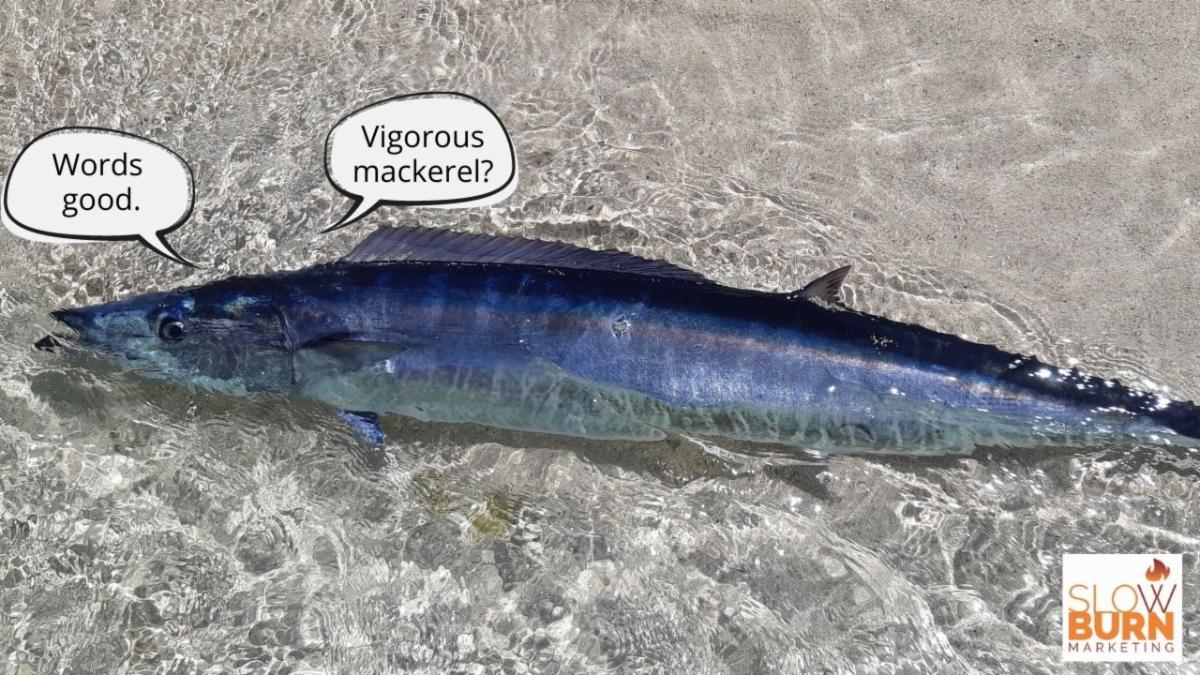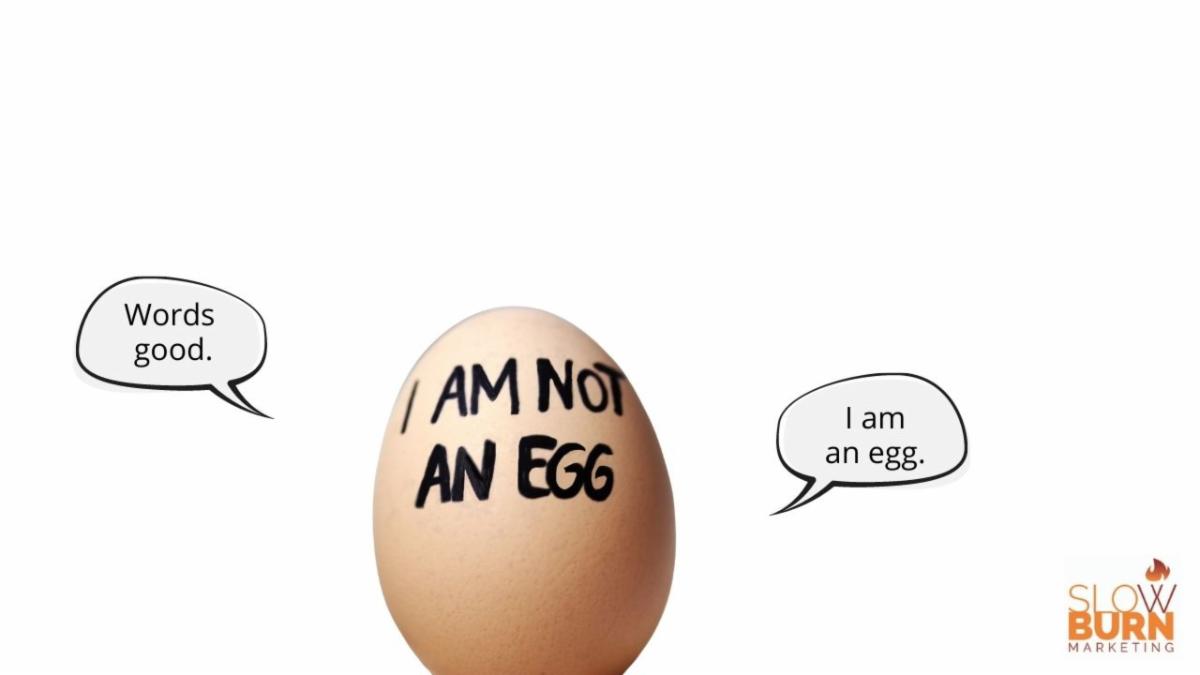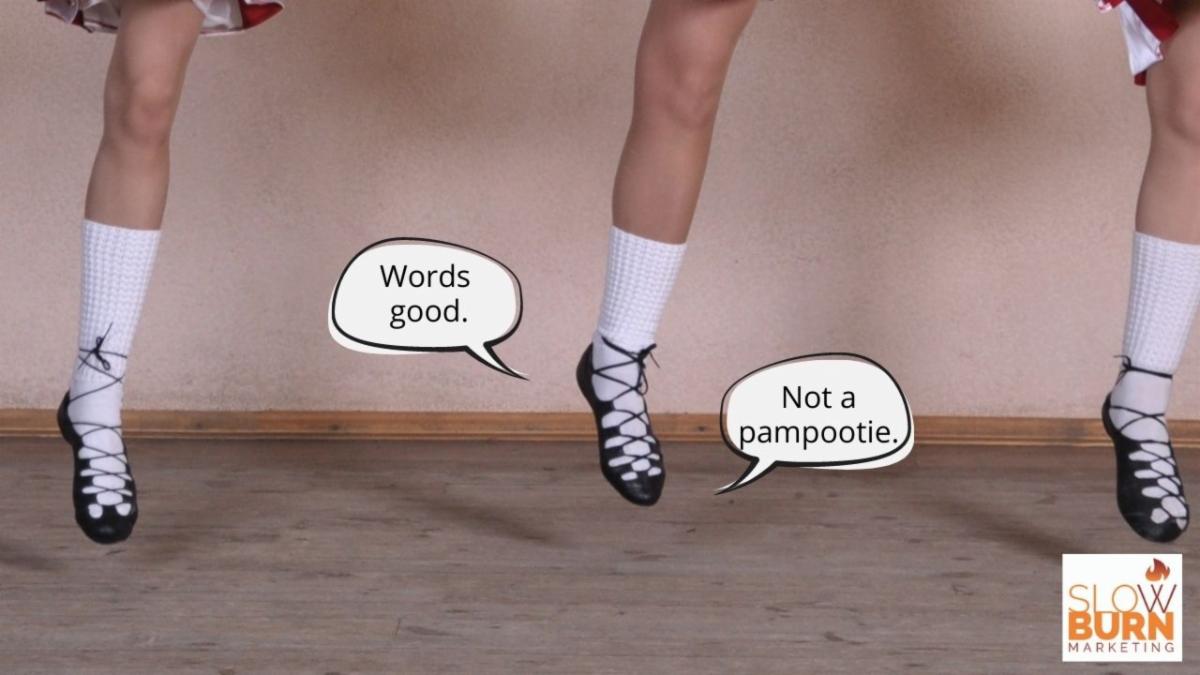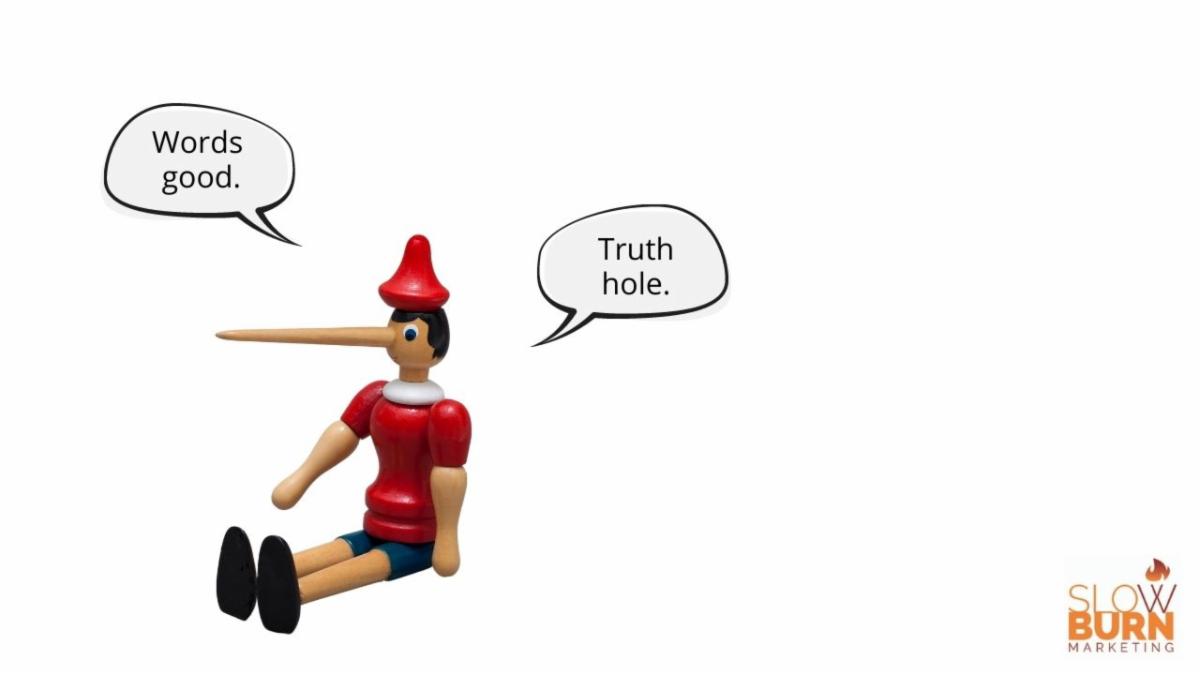|
Wahoos For yahoos?
In a retail store along the Mississippi Gulf Coast, I recently picked up a free fishing magazine. It’s called Coastal Angler. I’m not much of an angler myself. More of a dabbler. Perhaps, in the land of contraction-based words, that makes me a dangler? So many questions. Anyway… The headline on the cover is, “WINTERTIME WAHOO.” The cover photo shows a small, lean and happy woman hoisting an enormous, lean and unhappy fish. I was looking at this photo and wondering for perhaps the umpteenth time (where did we get that number, anyway?) how did the wahoo get its name? With you in mind, dear reader, this seemed like a good time to solve such a mystery. I went to everyone’s favorite source of demystification, Google. (Google’s name is a purposeful misspelling of the word “googol,” in case you’re interested. Where better to wonder about wahoo than Google standing in for googol? And unlike umpteen, googol actually is a defined number--a one followed by 100 zeroes. But I digress…) The word “wahoo” has many meanings. But the origin of the fish’s name was listed as “unknown.” That said, wahoo is also listed as a synonym for “yahoo.” Yahoo is defined as either an exclamation of great joy or a person who is rude and violent, as in “Every Sunday, this fishing spot is all wahoo for yahoos and it gets ugly.” (Interestingly, Yahoo was a favored search engine for a time before the yahoos over at the misspelled googol usurped their position of hierarchy. Wahoo for them!) After also failing at etymology from a formal resource (namely, an actual dictionary like Merriam-Webster, who merely defines the fish as “a large, vigorous mackerel), I defaulted to the next best resource for all things large, vigorous and etymological, the Hawaii Seafood Council. Who better to ask about the etymology of the word wahoo than the people who call wahoo by the word “ono.” As in, “Ono, some yahoo is asking about wahoo again.” If you care, the word ono is Hawaiian and means “good to eat.” As in, “Ono? Oh yeah! Yahoo, we’re having wahoo again!” But the early European explorers responsible for calling the fish by the name “wahoo” were not hip to the jive in Hawaii. But they did recognize that ono were plentiful off the island of Oahu. (Ono, see where this is going?) A common spelling of Oahu on early maps was (yes) “Wahoo.” And in a nutshell, there’s your folk etymology in action. Ono is very big at sushi restaurants. It is prized. I’ve never heard it called by the name wahoo, probably because of branding problems. Who wants to mortgage the house for two slivers of wahoo? It sounds like a kid’s party favor. Or a service one might acquire from a professional woman. "Hey, baby, how much for wahoo all night long?" Ick. But now that I know about the etymology, I will begin asking my sushi chef if he has any large, vigorous mackerel. If he says yes, I will exclaim, “Yahoo!” as I order my wahoo and hope that I am not mistaken for a vigorous and violent dangler. Cheers, Blaine Parker Your Lean, Mean Creative Director in Park City LIGHTNING BRANDING ON AMAZON The Kindle edition of our new book is now available at Amazon for the REDUCED bargain price of $9.95 For details about our new Lightning Branding courses, both do-it-yourself and we-do-it-with-you editions, click here. (There's even a video of us!)
0 Comments
Are your words saying the same thing as your pictures?
One of the joys of living in a tiny TV market and watching local broadcast is having a good laugh at the expense of local advertisers. Granted, the advertisers may not see it that way. And yes, you may identify this unflattering indulgence as a case of schadenfreude. (Maybe that should be a Words Good Good Word Of The Week?) Schadenfreude, a delightful sounding German word for delighting in the pain of others is a morbid and mirthful time for everyone but the most conscientious and uncorrupt. But let’s face it: there are really only three good alternatives here. 1) Cry. 2) Stop watching. 3) Call the business and offer to fix their advertising. Since I‘m a cold-hearted human whose tear ducts have been paved over, crying is out. To stop watching would require initiative to do something else, and I’m inherently lazy. And being afflicted by a non-enterprising, introverted kind of lazy means I’m not reaching out to anybody I don’t have to. I’d rather gouge out my own eyes with grapefruit spoons. So, hello schadenfreude! Anyway, there’s a local funeral home that advertises on TV with some frequency. Their ad copy says what you expect: all the normal loads of caring, compassionate boilerplate. Most of the words talk about sincerity and sympathy and such. Then there’s the swimming pool and the alcohol. Yes, the image that is firmly cemented into my gray matter is the shot of the men in the family who run this caring and compassionate concern gathered around a poolside patio table with cold, frosty beer. Nothing in funeral service advertising speaks to caring and compassion like backyard swimming pools and cold beer. Now, shall I play devil’s advocate? The message sent by the cold, frosty beer is this: “If it matters to you, we are not Baptists.” And granted, there might be some method to that madness. If the receptionist at the funeral home is tired of answering every caller’s first question by saying, “Sorry, we are not Baptists,” that cold frosty beer by the pool is a good way to qualify the prospect before they ever pick up the phone. That insane bit of possible genius notwithstanding… As you know, when writing advertising, the single most important person in the message is the customer. In my humble if hyper-enthusiastic opinion, the best funeral advertising of all time is the Forest Lawn radio of years ago in Southern California. The campaign was called, I believe, “Celebrate A Life.” Each commercial was a monologue by someone fondly remembering a deceased friend or family member, and how incredible and joyous the sendoff was. I’ve never heard any advertisement that made me say, “Wow, I wish I could be that dead guy.” But this came close. (Talk about the opposite of schadenfreude!) Ya know what those Forest Lawn commercials never said? “And we chose Forest Lawn because the entire funeral home family likes to drink frosty cold beer around the backyard pool paid for by my funeral dollars.” Watch the words that are going with your pictures. Words and picture must complement each other. It doesn’t matter whether they’re on the screen or in your listener’s mind. The words might be good. But something in the equation might be bad. Unless, maybe, there’s a madness method afoot. Words good. Madness thoughtful? Cheers, Blaine Parker Your Lean, Mean Creative Director in Park City LIGHTNING BRANDING ON AMAZON The Kindle edition of our new book is now available at Amazon for the REDUCED bargain price of $9.95 For details about our new Lightning Branding courses, both do-it-yourself and we-do-it-with-you editions, click here. (There's even a video of us!) What the pampootie?!
Yes, Random Words Good Good Word Of The Day is: Pampootie. The Pampootie is neither an off-brand disposable diaper nor the requisite, frivolous second-act show tune from a failed Broadway musical. Pampootie is a kind of footwear. And probably not the quality footwear blessed by St. Hubbins. (If you get the reference, you know who you are and probably saw such shoes dancing around Stonehenge. But I digress.) Pampooties come to the world from their humble origins in the Aran Islands of County Galway, Ireland. It’s a sort of medieval pre-tech footwear of the kind nobody ever stood in line for as if they were Air Jordans. In fact, there’s a good chance nobody ever really wanted pampooties at all, as they were prone to rot. As the shoes were made from untanned hide, Ireland’s damp climate could wreak havoc upon the footwear of the populous. A new pair of pampooties were expected to last about a month. Moreover, the pampootie was made from the more sturdy hide of the animal’s buttocks, so there’s that. Instead of Air Jordans, it seems doubtful anyone was marketing Air Buttocks. And with a life expectancy of a month only, how often would the styles be changing and the kids demanding their new Air Buttocks? “Mom! I needs me some new Air Buttocks! Seamus next door already has his, and they have the awesome new butt-hair soles!” Yes, early footwear innovation: the pampootie was often made with the hair of the buttocks left on the sole for better traction. Held together with twine or a leather strap, the pampootie is the forerunner of a shoe you may have seen in action, though may not have known as ghillies. Remember these are shoes as opposed to the suits worn by special forces soldiers as camouflage. Effective at hiding from the enemy, the ghillie suit is hard to dance in. And dancing is where you’d have seen the ghillie shoes. You’d have witnessed these shoes in action as the official Air Dance footwear of a touring company that dances up a Celtic storm, forcefully slapping the stage with their modern Air Buttocks slap shoes. Yes, the butt hair may have been replaced with rubber for purposes of contemporary convenience, making one wonder whether that rubber comes from the bouncy buttocks of the rubber tree and is the hair that’s not used for the shoe instead used to stuff pillows? Hard to know. But one can probably rest assured that the butt-rubber soles are better for dancing with abandon. Um, how did we get here? Oh, yes, Random Words Good Good Word Of The Day: Pampootie. Put that in your pampootie and kick it. Cheers, Blaine Parker Your Lean, Mean Creative Director in Park City LIGHTNING BRANDING ON AMAZON The Kindle edition of our new book is now available at Amazon for the REDUCED bargain price of $9.95 For details about our new Lightning Branding courses, both do-it-yourself and we-do-it-with-you editions, click here. (There's even a video of us!) Going Down The Truth Hole!
So, your manic scribe was digging for a good word to kick off the new year, and found it deep within a pulp novel. (Only the finest resources for you, dear reader, yes indeed.) The word that plucked my resonant chord last night was a very vivacious V-word: verisimilitude. Ah, yes, you’re saying to yourself. Verisimilitude. Um…what does it mean? Verisimilitude is the appearance of being true or real. The word is birthed to us by that maternity ward of so much English vocabulary, Latin. Specifically, we’re talking 17th century Latin in the nascent form of verisimilitudo (which, admit it, is more fun to say), a word derived from the parental units of verisimilis, meaning “probable,” in turn born of veri, a genitive form of verus, meaning “true,” and the word similis, meaning “like.” Dude, it’s true like! And if you’re anything like me, you’re getting sidetracked by the word “genitive,” which is an adjective indicating close associations between nouns and pronouns, and now knowing about those close associations, one is forced to speculate whether they’re standing at least six feet apart and wearing masks. But I digress. “Verisimilitude” is a good word hampered by an unfortunate gymnastic quality that makes it unwieldy. As much as one might like to trot it around in 2022, it’s going to stumble and stagger. It doesn’t just roll off the tongue. Now, in the realm of science philosophy, a synonym for “verisimilitude” is “truthlikeness.” Blech. That has no jazz hands whatsoever. Plus, it sounds made up. If we’re going to sound made up, let’s go for a truly made up word like “Truthiness.” Just one problem. The word truthiness is not a synonym for verisimilitude. It’s an antonym. It’s the appearance of truth with nothing to back it up. The word was coined by comedian Stephen Colbert in the age of The Colbert Report. And how ironic is it that the news satire show that became America’s most trusted news source gives the culture a truthy word to describe fake truth? These days, problem of truthiness abounds. Yesterday, I was listening to a news story about a family split between verisimilitude and truthiness. A young man who’s a professional journalist is required to source verifiable facts in his reporting. He also can’t persuade his mother that his verifiable facts are truth that counter the bald-faced BS of her favored if unverifiable political truthiness. She in turn pities her son’s belief in facts over fiction. What’s a mother’s son to do? If a dark age is characterized by belief in unsubstantiated claims and debates about the number of angels cavorting about the dual pinheads of government and science, well goodbye year of living in truthiness! Anyway, circling back to our original challenge… Verisimilitude seems like a good place to start in 2022, even if the word doesn’t quite roll off the tongue. For that quality, maybe we should look to its harder edged cousin, “Veracity.” Since veracity regards accuracy and conformity to facts, it seems like a good place to settle when looking forward to a new year with hopes of shining intellectual light on the darkened lunacy that abounded in 2021. A return to civility predicated on truth is my hope for the year ahead. But just in case, I still have last years’ brickbat helmet standing by… Cheers, Blaine Parker Your Lean, Mean Creative Director in Park City LIGHTNING BRANDING ON AMAZON The Kindle edition of our new book is now available at Amazon for the REDUCED bargain price of $9.95 For details about our new Lightning Branding courses, both do-it-yourself and we-do-it-with-you editions, click here. (There's even a video of us!) |
AuthorBlaine Parker is prone to ranting about any and all things related to brand. In many ways, he is a professional curmudgeon. While there is no known vaccine for this, the condition is also not contagious. Unless you choose it to be so. Archives
February 2022
Categories
All
|
|
© Copyright 2020 Slow Burn Marketing LLC |





 RSS Feed
RSS Feed

